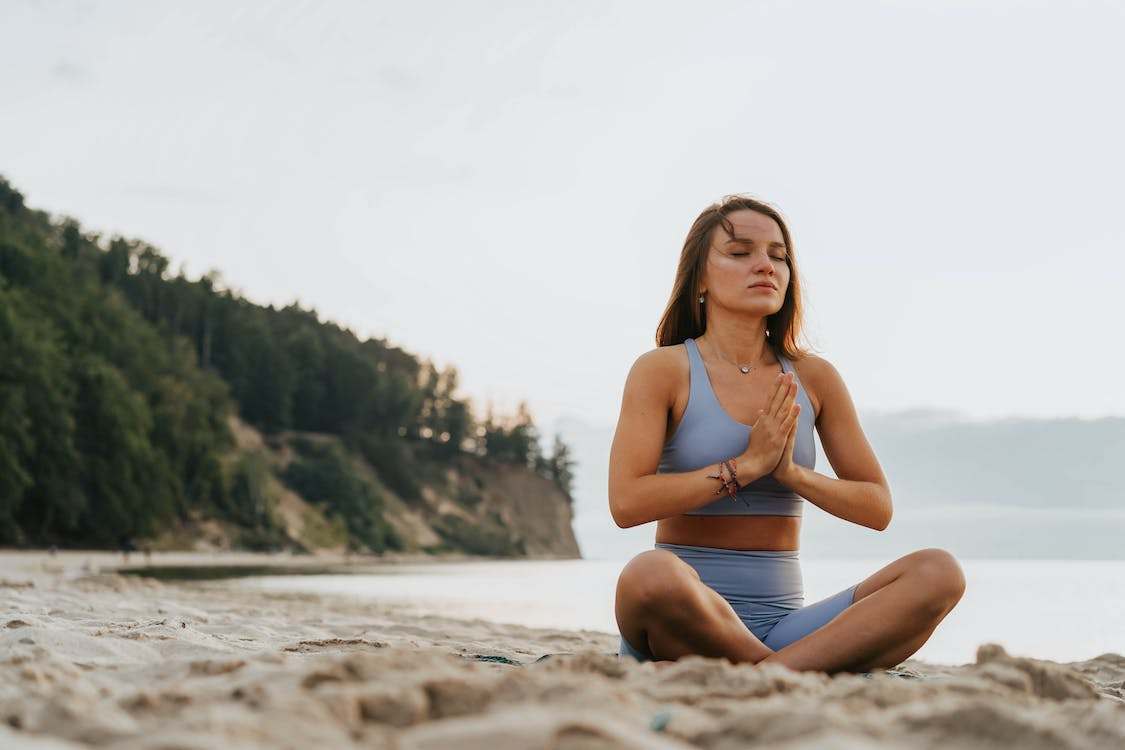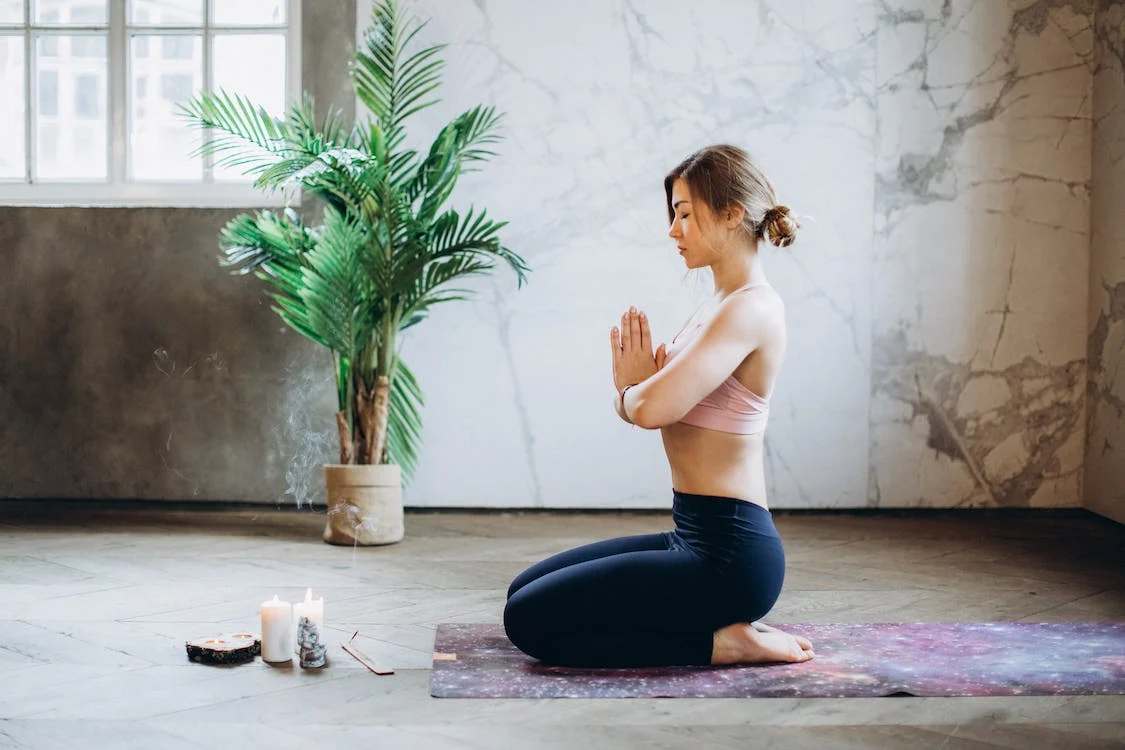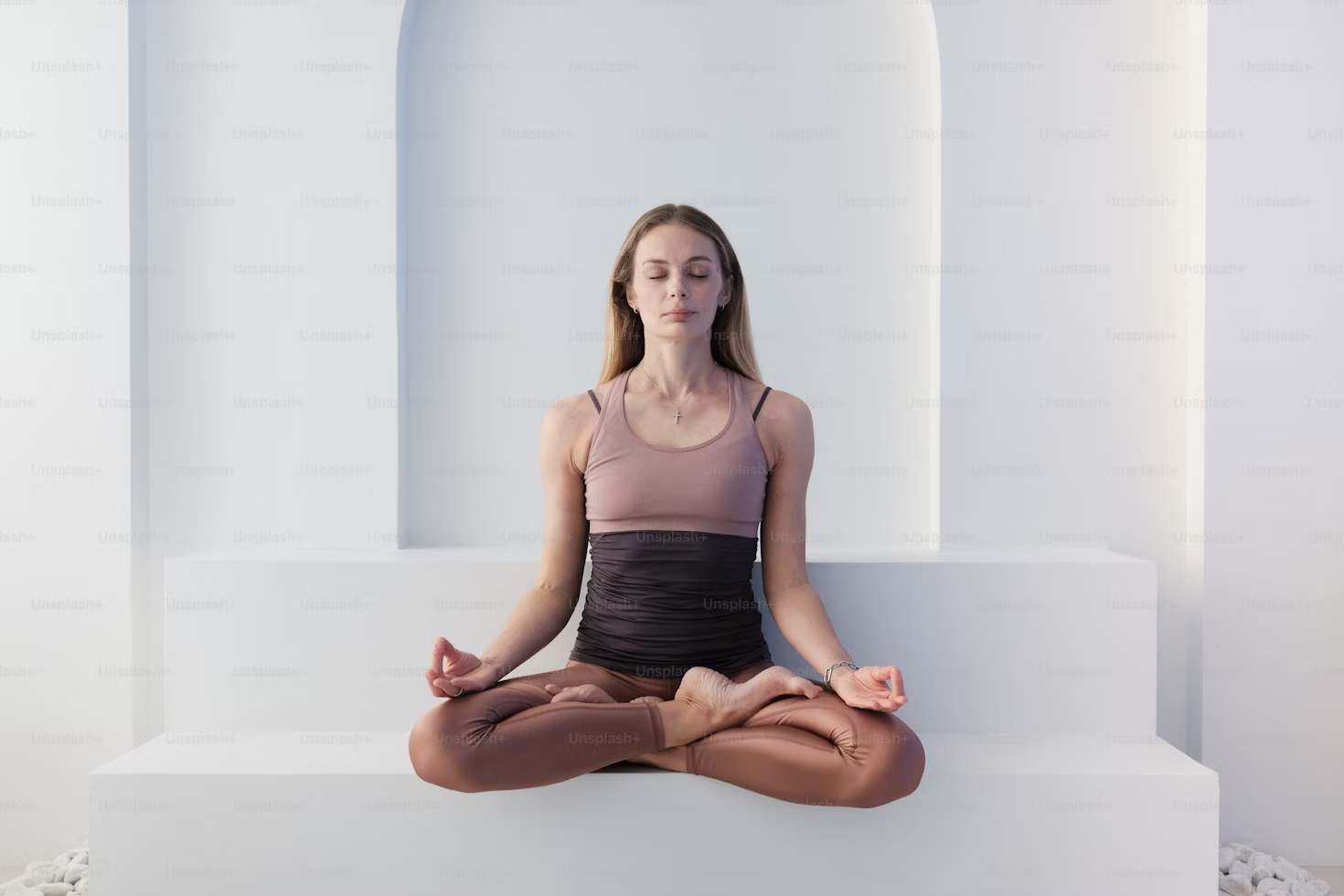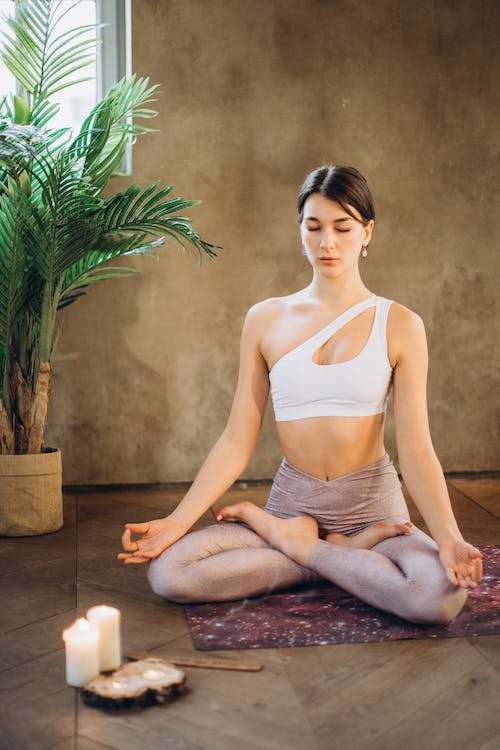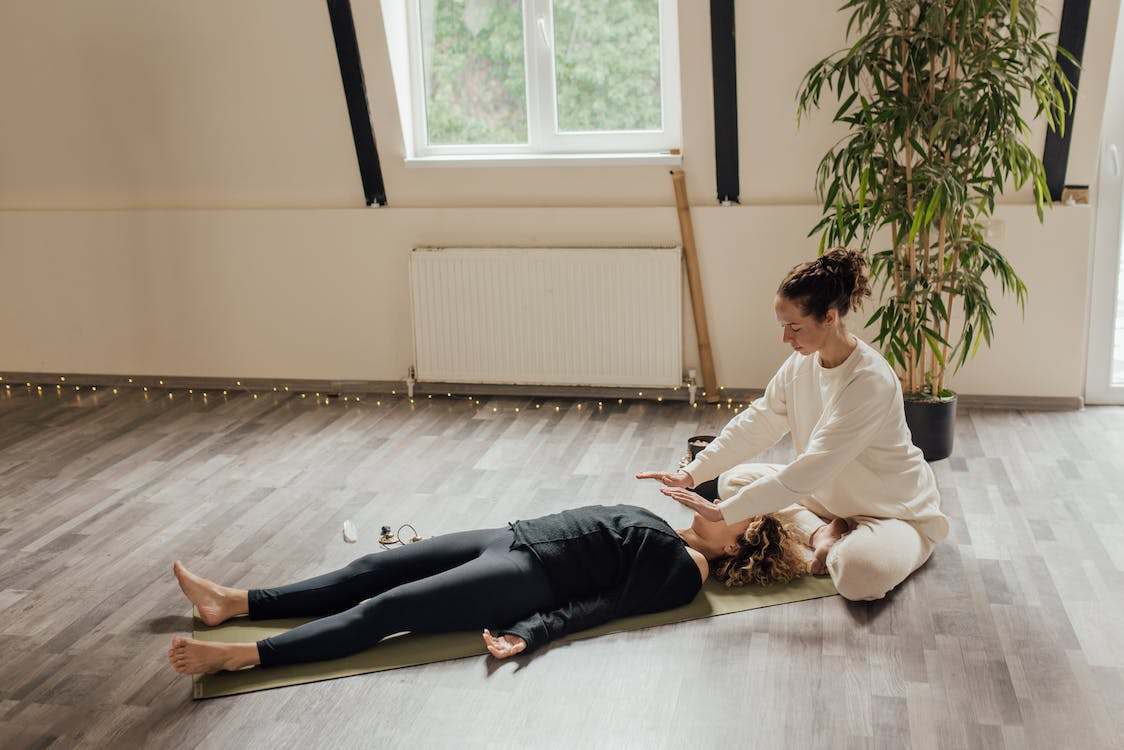Meditation, a profound practice rooted in antiquity, involves a purposeful shift of our attention away from the external realm, directing it inward to explore the depths of our own consciousness. (1) This contemplative discipline goes by various names, including concentration, sitting in silence, or contemplation, reflecting its diverse manifestations across cultures and traditions. Embarking on a journey of self-discovery, meditation invites individuals to engage in a deliberate and focused exploration of their inner landscapes, fostering a connection with the essence of their being. In its rich tapestry of methods and philosophies, meditation stands as a timeless pursuit, offering a pathway to inner peace, heightened awareness, and spiritual fulfillment.
The Difference Between Yoga and Meditation
The distinction between yoga and meditation lies in their fundamental nature and objectives, despite the fact that meditation is commonly viewed as an integral aspect of yoga. Here are some key distinctions:
- Physical Activity vs. Internal Process:
-
- Yoga: Primarily characterized by physical activity, yoga involves engaging the body through various poses and movements. It is a holistic practice that incorporates physical exercise, breath control, and mindfulness.
-
- Meditation: In contrast, meditation is an internal process that emphasizes cultivating mental focus and awareness. While physical practices like yoga can complement meditation, the core of meditation is a mental exercise requiring concentration.
- Mind Training vs. Body Training:
-
- Yoga: Focuses on training the body through postures (asanas) and breathing exercises. It is not primarily designed to train the mind but often incorporates mindfulness as a secondary benefit.
-
- Meditation: Aims at training the mind, helping individuals develop the ability to maintain focus and resist distractions. The practice involves cultivating specific states of mind, such as mindfulness, and does not necessarily involve physical postures.
- Intensity and Pain Management:
-
- Yoga: Can be physically demanding, especially with intricate poses, promoting mindfulness through movement. However, individuals with chronic pain might find it challenging to fully engage in the present moment due to physical discomfort.
-
- Meditation: Particularly useful for managing chronic pain, mindfulness meditation enables individuals to alleviate suffering by fostering a heightened awareness of the present moment. Unlike yoga, it doesn’t rely on physical movement, making it accessible to those experiencing pain.
While yoga and meditation are interconnected, they are distinct practices with divergent emphases and objectives. Yoga involves physical activity and is a holistic discipline, whereas meditation is centered on mental training and cultivating a focused, aware mind. Furthermore, both can contribute to overall well-being, and individuals often integrate them into a complementary lifestyle for a harmonious balance of physical and mental health.
What Is the Purpose of Meditation?
Delving deeper into the profound benefits of meditation reveals a holistic impact on our overall well-being. Beyond the scientifically supported advantages such as stress reduction and improved physical health, meditation serves as a gateway to a more profound connection with our inner selves. (2) The practice fosters mental clarity and emotional resilience, providing a sanctuary of calm amidst life’s challenges. By cultivating mindfulness, individuals can navigate their thoughts and emotions more skillfully, leading to enhanced self-awareness and emotional intelligence.
Moreover, meditation serves as a powerful tool for personal growth and transformation. It invites individuals to explore the depths of their consciousness, facilitating a journey toward spiritual awareness. At its core, meditation is a means of transcending the mundane aspects of daily life, offering a glimpse into the essence of our existence at a soulful level. As one commits to regular meditation, the experience evolves beyond a mere routine and becomes a profound exploration of the self. It opens up avenues for greater compassion, empathy, and a heightened sense of interconnectedness with the world. The benefits, therefore, extend beyond the immediate physiological and psychological advantages, encompassing a transformative journey towards a more enriched and spiritually aligned life.
7 Ways to Start Your Meditation Journey
In the midst of today’s frenetic and chaotic world, attaining inner peace and alleviating stress may appear to be an insurmountable challenge. Nevertheless, we aim to assist you in learning the art of meditation, offering a pathway to tranquility. One particularly acclaimed and proven method is mindfulness meditation. This step-by-step guide is designed to seamlessly integrate mindfulness meditation into your daily routine, providing a practical approach to finding serenity in the midst of life’s hustle and bustle.
- Establish a Sacred Space – Identify a serene and quiet corner within your home that you can designate specifically for your meditation practice. By doing so, you not only create a physical sanctuary but also imbue the space with the essence of your commitment to mindfulness. This designated area will serve as a constant reminder of your dedication to the practice, enhancing the overall experience of your meditation sessions.
- Discover Your Optimal Time – While meditation is beneficial at any time of day, it is advantageous to identify a period when you are fully awake and least susceptible to distractions. Experiment initially to discern what time suits you best. Whether it’s morning tranquility or a quiet evening, finding the optimal time aligns your meditation with a state of heightened awareness, optimizing the effectiveness of your practice.
- Assume a Comfortable Posture – Select a seated position that strikes a balance between comfort and alertness. It should be a posture that allows you to remain at ease without the risk of drifting into sleep or constant fidgeting. This ensures that you can maintain a state of relaxed attentiveness throughout your meditation session.
- Cultivate Single-Pointed Focus – Develop the practice of concentrating on one task at a time throughout your day. By training your mind to focus on singular activities, you lay the foundation for a valuable skill that seamlessly translates into your meditation practice. This disciplined approach enhances your ability to maintain concentration during meditation, fostering a deeper and more rewarding experience.
- Cultivate Consistency – Choose a specific time of day for your meditation practice and strive to adhere to that schedule consistently. By making your meditation sessions a daily ritual, you establish a routine that reinforces the habit. Regularity in practice is integral, as it not only deepens your meditation experience but also ingrains mindfulness into your daily life, contributing to a sustained sense of inner peace and well-being.
- Maintain a Meditation Journal – Record the duration of your meditation sessions, detailing your experiences, challenges, and any notable milestones. Keeping a journal serves as a valuable record of your meditation journey, offering insights into your progress and helping you navigate difficulties. This reflective practice not only enhances self-awareness but also serves as a motivational tool, encouraging continued commitment to your meditation routine.
- Cultivate Love – Embrace a Loving Mindset in Meditation. As you engage in meditation, foster feelings of love, tranquility, and serenity within yourself. Infusing your meditation practice with love creates an atmosphere conducive to stilling the mind. Approach your meditation sessions with a heart full of love, and you’ll find that it not only deepens your sense of calm but also contributes to an overall state of increased peacefulness and inner harmony.
8 Meditation Poses
- Burmese Meditation Posture – The Burmese position involves sitting with both feet placed in front of the pelvis, resting comfortably on the ground. This straightforward pose is well-suited for those who possess the flexibility for their knees to naturally rest on the floor. When settling into the Burmese position, sit towards the front of your cushion. Experiment with gentle movements, leaning forward and backward, swaying left and right, and adjusting your position until you discover a sense of balance. Finding this equilibrium ensures that you are securely centered on your sitting bones. Avoid leaning excessively forward, as this can exert undue pressure on the legs and feet.
- Lotus Meditation Pose – The quarter lotus position resembles the familiar “criss-cross applesauce” sitting style often taught in primary school. In this pose, each foot is positioned beneath the opposite knee, forming the stereotypical cross-legged arrangement. For optimal comfort in this meditation posture, a meditation cushion proves beneficial. This cushion lifts the hips, allowing for a forward rotation of the pelvis and preventing rounding of the lower back. Sitting towards the front of the cushion ensures the necessary tilt, avoiding a scenario where the knees are positioned above the hips. While the ideal position involves the knees gently resting against the feet, adjustments can be made for personal comfort.
- Half Lotus Meditation Position – The half lotus pose shares similarities with the quarter lotus, with the key distinction being that one foot is positioned atop the opposite thigh. This can be achieved by having the left foot rest on the right thigh or vice versa. It’s important to note that the half lotus requires substantial hip flexibility to prevent undue pressure on the knee joints. If you find the half lotus challenging, especially if you’re not accustomed to spending time on a yoga mat, consider incorporating preparatory exercises. Yoga pigeon pose or its reverse variation can serve as effective warm-ups, helping to condition your body and provide relief if you experience knee discomfort.
- Full Lotus Meditation Position – The full lotus position represents the most advanced posture, with each foot placed upon the opposite thigh. While highly stable and symmetrical, offering benefits in terms of the mind-body connection, achieving this meditation pose demands considerable lower body flexibility. Exercise caution and avoid attempting the full lotus if you have knee or hip conditions that may pose a risk or if it feels strenuous on your body. Engaging in yoga poses specifically designed to open the hips can aid in preparing for the full lotus. However, attempting to force your body into this posture prematurely is more likely to result in physical strain than the meditative serenity you seek, potentially leading to the need for physical therapy.
- Seiza Meditation Pose – Another alternative is the traditional Japanese kneeling posture known as seiza, meaning “proper sitting.” This technique can be executed using a meditation bench or, alternatively, by strategically placing a cushion or yoga block between your legs. It can also be practiced without any support, allowing the legs to rest on themselves while ensuring the tops of the feet are flat against the ground. The seiza kneeling position alleviates pressure on the joints of the lower body and promotes a natural, straight alignment of the back. Beginners may benefit from some form of cushioning under the knees and feet.
- Standing Meditation Pose – Standing meditation offers a beneficial alternative, especially for those prone to falling asleep during meditation or experiencing discomfort while sitting. All the meditation techniques practiced in a seated position can also be adapted for standing meditation. It’s crucial to avoid locking your knees while standing to maintain comfort and flexibility. For those feeling fatigued or finding it challenging to focus during sitting practice, some instructors suggest incorporating a body scan meditation while standing. Additionally, walking meditation serves as another alternative for individuals who find traditional sitting positions uncomfortable or challenging.
- Chair Meditation Pose – Meditating in a chair offers a practical and accessible approach to reaping the benefits of meditation. By placing the feet on the floor shoulder-width apart and maintaining an upright posture, individuals can create a conducive environment for mindfulness. Utilizing cushions or pillows enhances comfort and encourages proper alignment, with the option to lean against the back of the chair if necessary. Addressing common challenges, such as slouching, can be achieved by incorporating supportive elements like a rolled-up sweatshirt for lower back support. Additionally, designating a specific chair exclusively for meditation establishes a mental cue, signaling a dedicated space for the practice and aiding in the mental preparation for a focused and serene meditation experience.
- Lying Down Meditation Pose – When traditional seated meditation poses prove uncomfortable, lying down meditation offers a viable alternative. To adopt this position, recline on your back in the yoga “corpse pose” or savasana, with arms by your side and palms facing upward. The objective is to maintain a state of stillness while staying awake and aware during the meditation session. It is important to note that lying down meditation can easily transition into a nap, especially for beginners. To enhance the experience and reduce the risk of dozing off, consider bending the knees and placing the feet flat on the floor hip-width apart. This adjustment not only alleviates pressure on the lower back but also aids in staying alert and engaged during the meditation practice.
Importance of Proper Meditation Position
The choice of your meditation position holds significance as it forms the foundational support for your practice, whether you’re aspiring for enlightenment or aiming for mental well-being. Drawing from centuries of experiential wisdom, there is a consensus that adopting a cross-legged posture with a straight spine enhances mental clarity—an observation that aligns with scientific validation of the interconnectedness between body and mind. (3) In practical terms, many contemporary lifestyles involve chair sitting rather than floor sitting. If sitting cross-legged proves uncomfortable, using a chair is just as effective, provided the details are attended to correctly.
It is noteworthy that the Buddha highlighted four distinct meditation positions—sitting, standing, walking, and lying down—without indicating the superiority of one over the others. (4) This dismisses the notion of a singular best position, emphasizing the adaptability of meditation to diverse circumstances.
Meditation is inclusive and accommodates individuals of varying health and flexibility levels. The key is not to force ourselves into a predefined ideal but to tailor our meditation practice to suit our unique needs. In Buddhist meditation philosophy, the quest for an optimal meditation position is viewed as an individual experiment, encouraging practitioners to explore and discover what resonates truthfully with their own experience.
Conclusion
While meditation and yoga are frequently intertwined, it’s crucial to recognize their distinct characteristics. Meditation predominantly centers on enhancing mental wellness and awareness, prioritizing the cognitive and emotional facets of an individual rather than the physical. Despite its primary focus on the mind, extensive evidence attests to the profound and holistic benefits that meditation imparts on an individual’s overall well-being. By emphasizing mental clarity and emotional balance, meditation serves as a powerful practice that contributes to the comprehensive health of an individual, illustrating that the impact of this ancient discipline transcends the boundaries of the mind.
